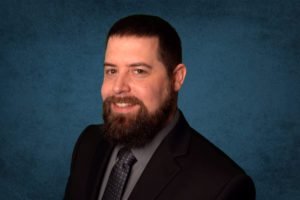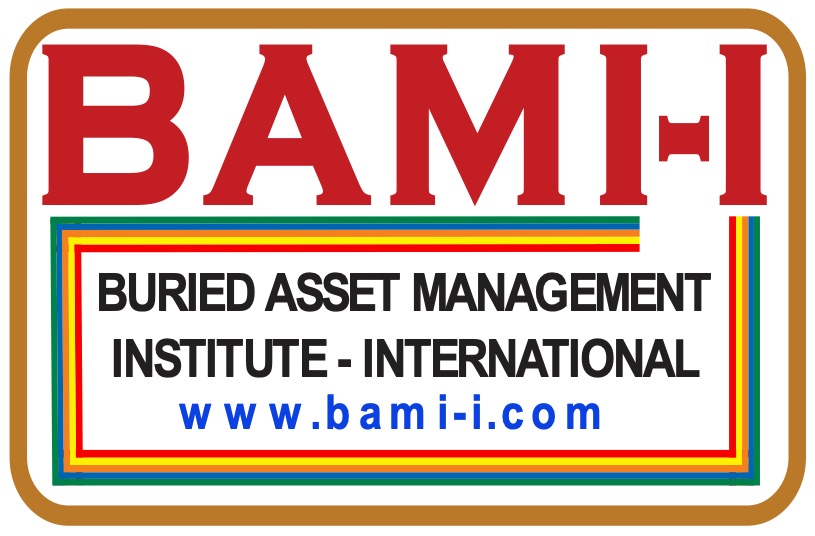Author: Boston Snyder, Asset Manager, City of Goshen, IN

What is asset management, anyway? I have heard this question many times since assuming my role as Asset Manager of Goshen, Indiana. For Goshen, asset management was not only a new practice, but it was also a new concept. Goshen, Indiana is a municipality that has approximately 34,000 residents. Goshen’s wastewater treatment plant treats 5 million gallons per day on average with a peak flow capacity of 12.5 million gallons per day, which is fed by approximately 148 miles of sanitary sewer pipe. Goshen’s water system has two treatment plants with the ability to produce up to 9.1 million gallons of water per day, which supplies residents using approximately 198 miles of water main. As the Goshen was planning much needed improvements to the wastewater treatment facility, it was revealed the state of Indiana had started to implement mandatory asset management rules. While a finished asset management plan was not a requirement, cities needed to show that they were in the process of making an Asset Management Program (AMP) in order to receive State Revolving Funds (SRF) from the Indiana Finance Authority (IFA). Like many others, this left Goshen scrambling to ensure they meet the requirements and retain access to funding. Fortunately, the IFA left time between announcing the rules and implementing their effective date, providing such much-needed breathing room for the deadline. After evaluation of what will be needed for SRF applications, the Public Works team in Goshen decided it did not make sense to go through the motions without gaining useful insights to our infrastructure and shaping the best internal practices to improve levels of service. Creating a document solely to satisfy IFA requirements was not enough, and the city devised a plan. Public Works employees started with the wastewater treatment plant and developed a list of every asset that went into the facility. Assessments were performed on each component to determine the likelihood of failure, consequence of failure, and overall risk of failure for each of these components. A consultant also helped the city develop a rehabilitation and replacement planning system to plan linear replacement projects over the course of 20 years.

As Goshen was building out their asset management database, the thought of producing a document to solely satisfy IFA requirements was not enough. Goshen realized the benefits of having a fully dedicated asset management implementation across the city and decided to create an Asset Manager position. I assumed this newly created position as the first Asset Manager for the City of Goshen in March of 2023. The first few days of the new job were overwhelming. I initially underestimated the amount of asset management that could be applied to an entire municipality, but I had to start somewhere. Many arguments could be made as to which aspect of asset management is most important, but one aspect stood out amongst the rest. The stakeholders. When working for a municipality, every citizen and business owner within your municipal limits is a stakeholder, and these stakeholders all share a common interest in wanting the highest level of service from their local officials. Many of these stakeholders are also ratepayers of the local utility. For this reason, the use of asset management to make necessary utility infrastructure improvements without affecting ratepayers was a top priority, and the IFA makes it possible to accomplish that goal. Maintaining access to SRF is essential, so I turned my attention towards IFA guidelines. Goshen had just gone through an expansion project at our wastewater treatment plant, so I needed to start on our sewer system’s asset management program first before transitioning to water.
IFA guidance to satisfy the AMP requirements was straight forward and I quickly learned my end goal as I started pulling together information. Goshen’s Public Works staff worked diligently on assessing vertical assets and compiled a robust inventory. Even though asset management was not a requirement yet, I found many aspects of the workflow which were already occurring at Goshen were in line with strong asset management practices. The IFA seeks to obtain lists of all assets that require replacement over the next 20 years alongside their estimated replacement costs. This was my first major struggle. Why replace something solely based on age when it is working efficiently with no failures? We used a composite rating system to determine the overall risk of failure of our assets based on condition, and this seems like a much more realistic insight into the condition of our asset inventory than the age of the assets alone. During the inaugural Global Buried Asset Management Congress, I was able to hear from industry leaders around the world, most of which shared the same theme, ignore age when making decisions for aging infrastructure. Focus on the infrastructure that is in the worst condition and let the assets that are working correctly continue to work correctly for now until they can be replaced also. However, compliance must be met, and a replacement list based on age was created. Since the list we created based on age does not help us internally as much as our initial list, we will have to maintain two individual sets of data moving forward. One based on condition, and one based on age. This should allow us to continue to satisfy state requirements while also keeping the necessary knowledge of our system to understand which components need priority attention.

Along with the utilities themselves, properties, buildings, and easements owned by the utility are all components a utility should be familiar with. Proper documentation of each was also a requirement in our AMP. Properties and buildings were pretty straightforward, but quickly compiling easements was going to be a struggle. 3 months of my initial asset management building process was spent using software linked directly to our county’s Recorder’s Office where I searched and compiled a list of utility easements throughout Goshen in which the City was the grantee. As documents were found, they were also inventoried and drawn into Goshen’s Geographic Information System (GIS). Drawing all of these into GIS as I encountered them has already proven useful, and any legal descriptions that have been drawn in can pull the document instantly. Decision makers are able to determine legal rights to utility access directly from their computers while planning projects, working with developers, or even answering calls from the public. This provides us with both better knowledge as well as a faster response time when answering questions to stakeholders.
Despite any challenges I will face on my own, the City of Goshen will need to act together as a team to accomplish our needs. Gaining employee buy-in is the second major struggle I encountered as my position solidified into standard practices here in Goshen. Some colleagues were excited to see how much information asset management offered to ease decision making, while others looked at it as another regulation they have never had to follow before. The only thing I could do was try my best to reassure my colleagues that my intent was not to make their jobs more difficult. In fact, I aimed to make their jobs easier. It just took some time to reach those employees, and their help was needed to achieve our goals for the greater good of the City. I started this position less than a year ago at the beginning of March in 2023. As we make the transition into 2024, we are starting to feel like our foundation of asset management has been laid and we have a good base to build from. Hopefully after what feels like a very long 9 months, my colleagues will be able to start seeing the benefits of asset management and employee buy-in will become easier as we start to implement more processes and practices into even more areas of Goshen.

Communication is another major struggle I face. It is not that employees do not communicate with each other. In fact, my colleagues do this very well throughout the city. The fact that data is not easily shared between departments is the communication struggle faced by many. The City’s GIS Coordinator has been doing a great job of updating our online portal platform to make GIS data easily accessible. Applications for field workflows to simplify data collection and even dashboards intended for managerial data consumption have helped to improve analytics and decision making for the crews that utilize the GIS software. Work performed in the field is instantly accessible by those who need to understand what happened, and also helps to show just how efficient our field crews are accomplishing tasks. While our GIS system grows stronger, the City is also in the process of implementing a strategic management plan through which each department was interviewed to determine their data and technological needs. Through this process, we are able to identify the key components that need shared amongst departments through centralized data and can prioritize implementations of data as our GIS platform grows and we launch an enterprise asset management software. The shared data will allow for easier decision making, more knowledgeable decisions being made, and an overall increase in the level of service provided to stakeholders throughout our organization.
After my short journey so far, I feel like I have learned quite a bit, but there is so much I still do not know. If I have one piece of advice to offer anyone looking to start an asset management program it would be this. You’re going to struggle, and that’s okay. It will be tough to make decisions when the answers are not readily available. There is a great community out there filled with professionals that have likely encountered your issues before. Do not be afraid to reach out and ask advice on making decisions. Final decisions are often specific to your organization, and including your team will make these decisions easier. Do not try to implement practices on your own, but build out processes alongside your team. Reassess your newly implemented practices regularly and determine internally if some of the choices you have made are working, or if they need to be altered to better suit the workflow. If your choices are working well enough, there is a good chance you can apply the same practices to other aspects of your organization as well. If they are not working, tweak the formula and try again. If a practice does not work as intended, it is not a failure. You have gained knowledge even if it doesn’t feel like it.

Boston Snyder, Asset Manager, City of Goshen, IN
